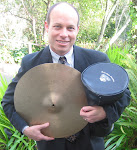Overcoming poverty: Finland has less income inequality than the United States, and American income inequality continues to grow. The U.S. has been increasing in inequality for twenty years. Short of draconian measures, the US won't share the pie better any time soon.
Free education for all: Finland has no charter or private schools. All the schools are more or less the same. The United States could not be more different in attitude toward private education and our history of parochial education, and. again, it is unlikely we will change.
Cradle to university care: Again it is unlikely that the United States will enact universal day care for newborns up to age six. However, Finnish high school has academic and vocational streams. At last, here is something we should and can do. The United States used to do a better job at encouraging youth to take classes in auto shop, woodworking, and metalworking. Vocational education is a part of our history, and we should redouble our efforts training students in technology and the shop classes above. Not everyone has the work ethic and talent to be a doctor, lawyer, or professor, and most computer and software technicians make an upper-middle class livelihood. In fact, it is shortsighted and counterproductive to assume, as is fashionable now, that everyone must go to college. (See Beyond One-Size-Fits-All College Dreams and What message Does College for All Send here.)
Finland also provides 65 percent of students free university tuition. This used to be the case in California as well. My semester tuition to the University of California was around $700 when I graduated in 1982. I paid much more for my Berkeley apartment. (Now tuition is about $13,000.) When the state figures out how to better manage its finances, perhaps we will see near-free tuition some time in the future. See my blogs on California finances here and here.
Personalized education: Finland has no grade-level or national standards. Every child is unique, and every school plans its own curriculum. One third of Finnish students are in special education.
Give schools and communities control over their own curriculum? Imagine that! Standards aren't going away, but putting one third of students in special education; that is, giving more resources to the bottom third would, ironically, increase standardized test scores and lower drop out rates. We should do that.
Creative learning: "Finland has the least number of instructional hours of all countries. We have less time to teach and more time to cooperate with other teachers." Finland is also taking away time for math and reading and adding time for music, drama and the arts.
We are moving in the opposite direction. However, American schools have improved by using collaborative assessment. Merit pay has shown less promise.
Localized assessment: The Finns don't use nationalized or state-level assessments. The schools and teachers assess instead, and education money is spent on teacher development, not on the equivalent of state testing. We should do the same.
Competition to teach: Only ten percent of applicants to teaching schools are accepted to the primary school program. All have a masters degree and few leave the profession. Teaching is paid well, comparable to those with similar amounts of education.
Here we have the most important and critical difference, in my opinion, the real secret of Finnish success. Finland takes her best professionals and makes them teachers. America takes her best professionals and makes them doctors, lawyers, and investment bankers. Finland gets all-star teachers. We get Wall Street. If we want better schooling for our kids we need to select and train better educators. We can imitate the Finnish model by making teachers as respected as
If you are still not convinced, please read McKinsey's How the World's Best-Performing School Systems Come Out on Top. Examining the success of ten systems including those of Singapore and Finland, McKinsey finds that that the top ten percent of high school and college graduates go into teaching. (See link here.)
Postscript: USC professor emeritus Stephen Krashen indirectly agrees with Sahlberg. In a July 16, 2012 letter to the New York Times, he states
The mediocre performance of American students on international tests seems to show that our schools are doing poorly. But students from middle-class homes who attend well-funded schools rank among the best in the world on these tests, which means that teaching is not the problem. The problem is poverty. Our overall scores are unspectacular because so many American children live in poverty (23 percent, ranking us 34th out of 35 “economically advanced countries”).My own anecdotal evidence is not so clear. I teach plenty of middle class kids that do poorly on standardized tests--and not just in history! Teaching strategies must improve and remediation time must increase to help these kids.





No comments:
Post a Comment